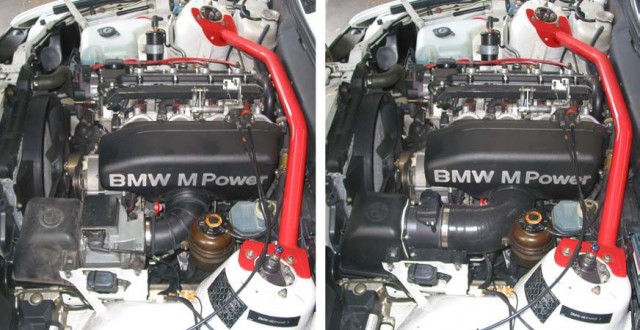The replacement of a stock vane-style air flow meter (AFM) with a mass air flow (MAF) sensor
is one of the most effective ways to improve performance on a naturally aspirated engine. It is
common to produce gains of 10 hp at the wheels on engines in the 2.5L range and higher gains
on larger engines.
The MAF sensor with its open cross section is capable of far better air flow
than an air flow meter which results in improved efficiency and overall performance. A well
tuned MAF conversion also results in improved throttle response and smoothness.
The photo below shows a Bosch air flow meter from a BMW E30 M3 on the left compared to
the MAF 3.5 sensor on the right that is used to replace it in the Split Second MAF Kit. Note that
the air flow meter has lots of sharp edges and protrusions that can impede air flow. The MAF
sensor has a smooth opening and much larger cross section.
TN2_AFM_to_MAF_Conversion.jpg
When an engine is modified by changing the air flow meter to an MAF sensor, there are a
number of technical issues that must be addressed. The main challenge is to adjust the response
(output voltage vs. air flow) of the MAF sensor to match the original air flow meter. Other
issues include slowing down the rate of change of the MAF signal to match the response time of
the slower air flow meter. Since the MAF sensor measures mass air flow, its reading is very
sensitive to changes in air density. Air density changes dramatically with elevation which causes
greater changes to the MAF reading than that of an air flow meter. This requires elevation
compensation in the calibration circuitry. All of these technical issues are addressed in the
laptop programmable PSC1-004 which is the heart of the Split Second MAF conversion system
[...]












 Απάντηση με παράθεση
Απάντηση με παράθεση